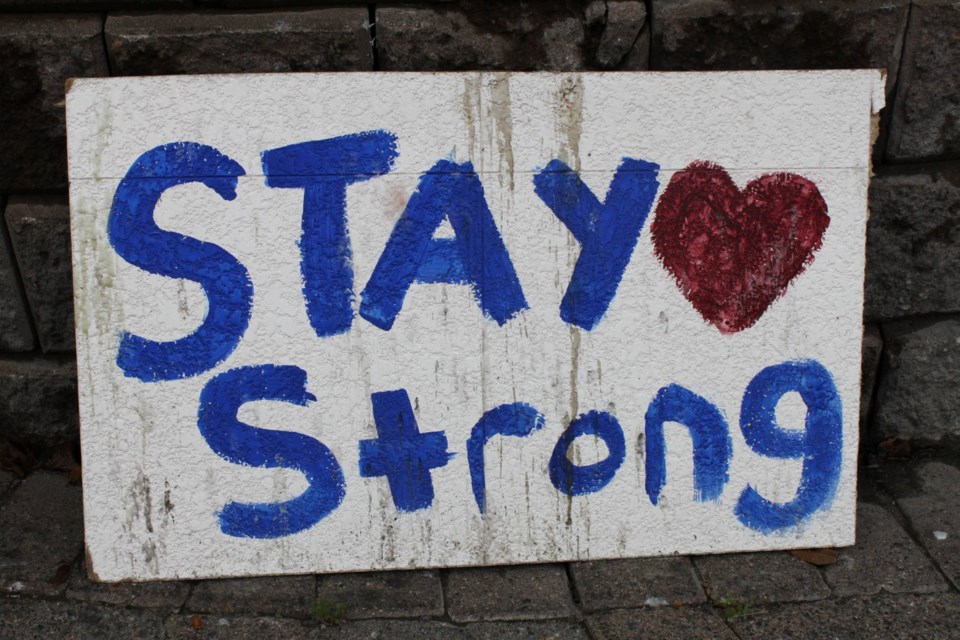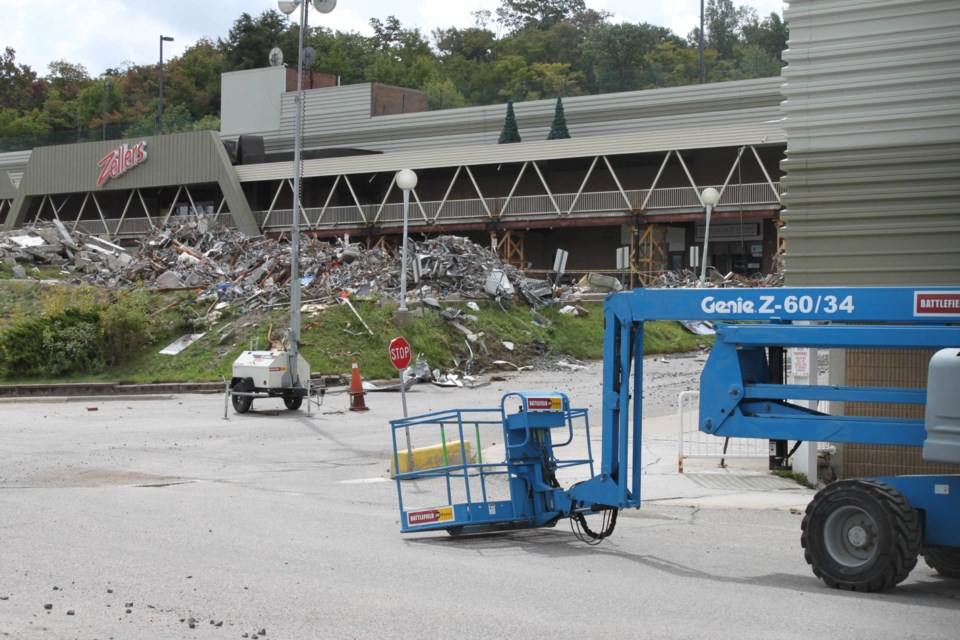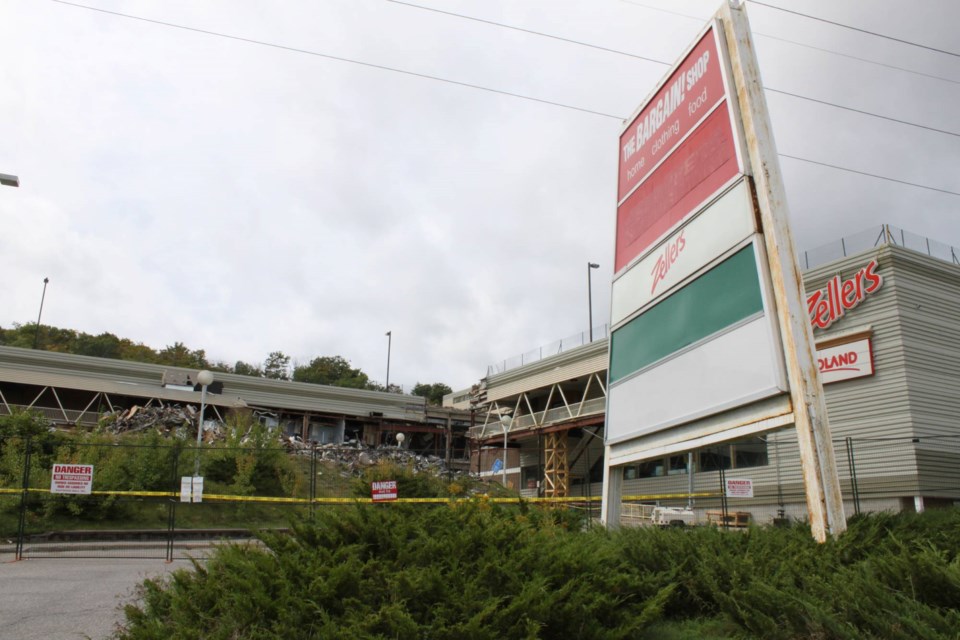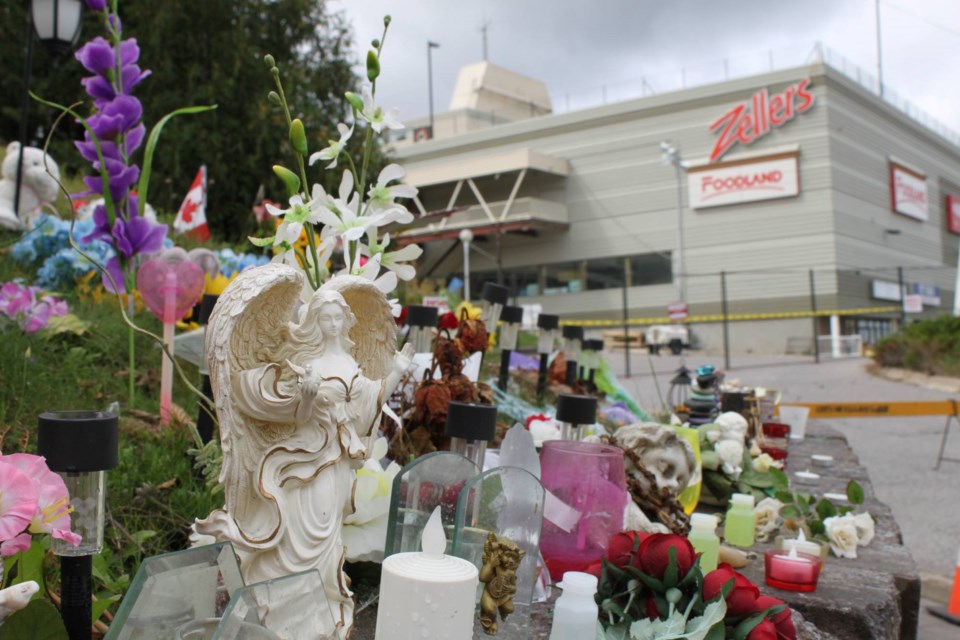As iconic images go, this one’s hard to miss. Arriving in downtown Elliot Lake, visitors are greeted by a sign advertising the Algo Centre Mall just before the building itself comes into view. It’s then that the now-familiar scene unfolds: the devastated structure sits in ruins, a portion of which has been sheared away and lies in a rubble heap in the parking lot.
It’s the image that was circulated across the country on June 23, when part of the mall’s roof collapsed down two storeys, killing Lucie Aylwin, 37, and Dolores Perizzolo, 74, and injuring 20 others, permanently altering the city’s landscape and deeply affecting its residents.
It’s the same image that residents are eager to retire for one that better reflects the true spirit of the former uranium town-turned retirement community. It’s a city that immediately sprang into action following the mall collapse and is on a path of recovery to return Elliot Lake to the vibrant, tightly knit community.
In those first few hours, and in the days since, the business community has shown strong solidarity with the city. William Elliott, general manager of the Elliot Lake & North Shore Corporation for Business Development (ELNOS), was wearing a firefighter’s hat that fateful day in June. He said the community was quick to respond in any way it could.
“I was at the mall Saturday afternoon, and anybody that we would call, for anything, (their response) was instantaneous,” he said.

A call to Rona at 3 a.m. produced some needed lumber. Foodland owner Pierre Vaillancourt, who lost his store in the collapse, returned to the site repeatedly with food, water and Gatorade to keep the rescue crews going.
No Frills, now the only grocery store in town, has started carrying clothing, as has Sights and Sounds, a video rental store, to help residents who aren’t able to travel out of town to shop.
“There’s no profiteering going on,” Elliott said. “It’s more community service than it was a business opportunity.”
Sixty per cent of the downtown’s retail space had suddenly disappeared, along with social services and the library. Dozens of employees have been left out of work and residents are forced to shop out of town.
With a remobilization committee, the Elliot Lake Chamber of Commerce has taken a lead role in the recovery to find storefronts and jobs for those displaced businessowners and employees. Smaller subcommittees were spawned to delve into community well-being and social services, employment and training, business and economic development.
“Some of our members were in the mall, but when we mobilized, we didn’t limit ourselves to only helping chamber members,” chamber president Joyce Cyr said. “We basically took it as a community as a whole and the business community in general needed our help.”
A chamber newsletter that updates residents on the recovery process began publishing in September.
“We’re very well connected to each other, and business is a huge concern because small business is how the community survives,” Cyr said.

Some businesses have already taken advantage of a $2-million provincial emergency business continuity fund to help them get back up and running.
Services that were located in the mall have moved to the former White Mountain Academy. With $264,000 from Queen’s Park, building renovations are underway to house Services Canada, the attorney general’s office, Algoma Public Health and the library, and to create public meeting space and a business development centre.
“We wanted to develop a really comprehensive plan for the community so that we could actually move towards recovery of the retail sector,” said Marie Murphy-Foran, the Elliot Lake Development Centre’s co-ordinator.
She estimated six to eight businesses are already accessing the business development centre, but the loss of the mall has had greater consequences.
The Algo Centre Mall was a community meeting place for many residents.
They could meet friends for coffee, buy groceries, play their lucky numbers at the lottery booth, catch up on their reading at the library, and hop on the bus to get home at the end of the day.
Now that social outlet has been taken away, and there is a worry that residents who already found it hard to get around will have a tough time this winter, Elliott said.
What’s dismayed many residents is Elliot Lake’s portrayal by the national media as a hard-on-its-luck former mining town that is using the tragedy to leverage government dollars to modernize the 1970s-era community.
Elliot Lake was experiencing a rebirth of sorts when the mall roof collapsed.
A downtown revitalization plan was in full swing, consultants were working on an economic development strategy, the city’s retirement corporation was marking two decades of success, and there were a half-dozen new business renovations and construction.
Those plans have taken a backseat, but aren’t forgotten, according to Dennis Guimond, the downtown revitalization project co-ordinator.
However, a major challenge is an upcoming timeline crunch to access government funding. The entire program had to be completed by next April to remain eligible. But Guimond believes the ideas generated to date have merit.
“The city has done massive amounts of studies since 1988 about downtown cores and traffic flow, so we don’t need to get more consultants,” he said. “We just need to implement some of the study stuff that still holds true now.”
Guimond suggested the city can re-evaluate the programs and determine priorities this winter.

The future of the Algo Centre Mall remains uncertain. The property is back in the hands of owner Bob Nazarian following the conclusion of the OPP investigation. In August, city council pledged to commit $3.5 million for site preparation of a new mall on 7.63 acres of land near the downtown.
ELNOS will oversee the project, which Elliott said has attracted the interest of at least three significant developers, who have been on site with architects and engineers.
Tenders for the site work and the RFPs for the proposed mall went out in mid-September, with the site preparation expected to be completed by year’s end. The project has already received first-stage funding approval from FedNor and the NOHFC, and Infrastructure Ontario has offered the city $4 million in debt financing. But Elliott is optimistic the sale of the land will cover those costs.
The new mall will be a focal point for the city, just as its predecessor was, but Elliott emphasizes the successful developer must offer something that meets the needs of seniors.
“This isn’t about throwing up a bunch of boxes and jamming them as full of retail and services as you can get,” he said. “It’s about doing something that the community needs. The community needs retail, but the community needs a few other things tied into there.”
In the coming days, as the community starts to recover, it will find ways to keep its 12,000 residents nourished, safe, clothed and employed. It will look to recapture that proactive attitude that has helped it prosper in the decades since it was known simply as a northern mining town.
Along with the completed OPP investigation, a public inquiry is underway, as are an investigation by the Ministry of Labour and a $30-million class-action lawsuit taken out by the families affected by the roof collapse.
But Ed Pearce, the remobilization committee’s communications co-ordinator, believes that, despite the incident, the community will prosper.
“I’m extremely optimistic that out of a tragedy there’s going to be a renaissance, and I think that’s what we’re going to have here,” he said. “It’s terrific.”




